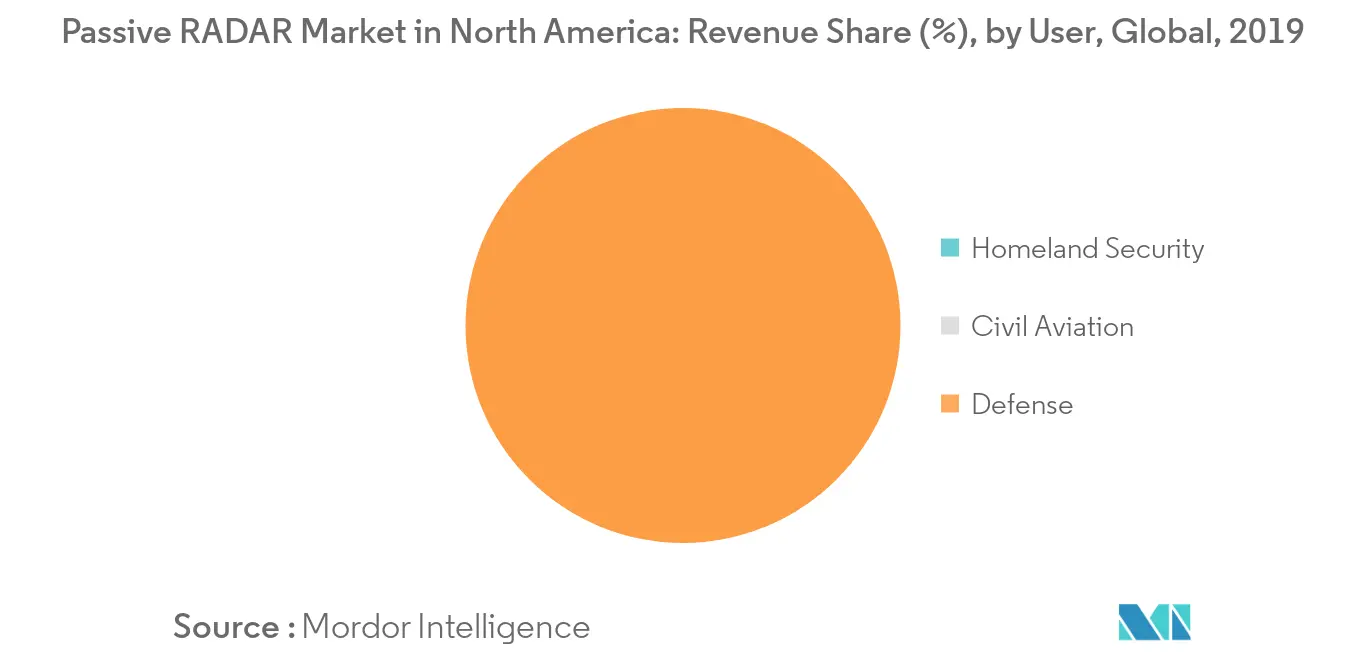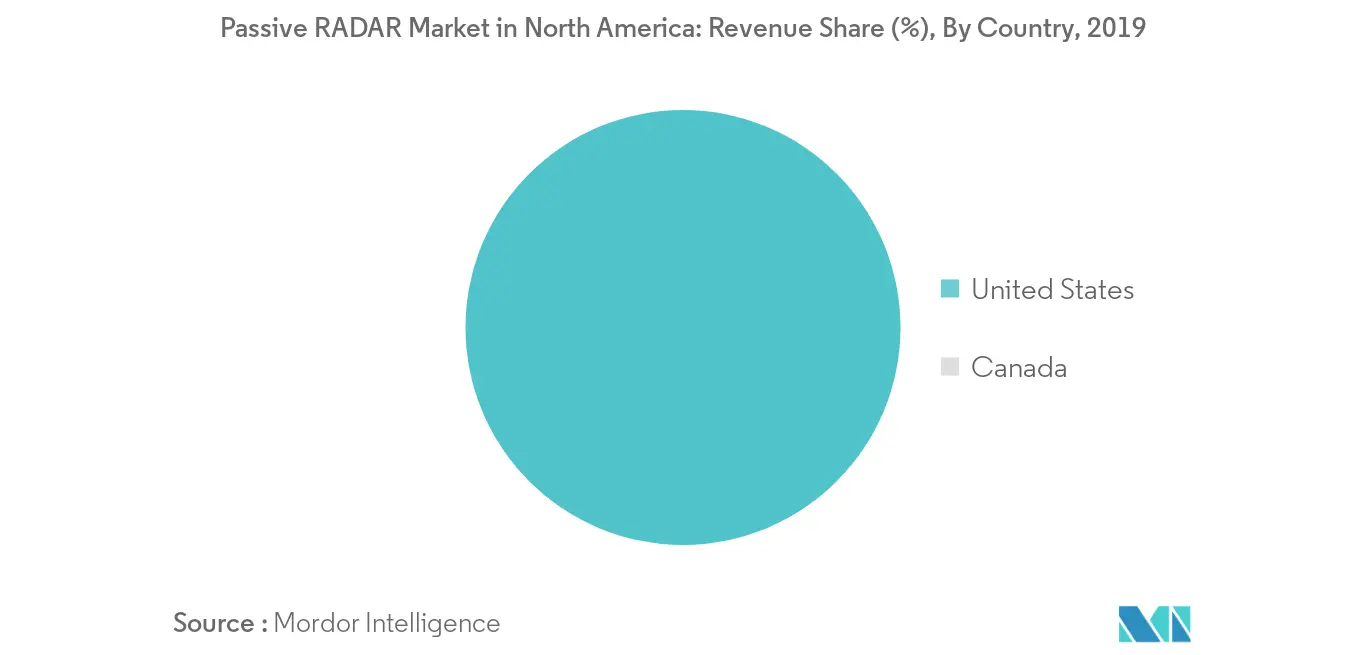Market Trends of Passive Radar Industry In North America
This section covers the major market trends shaping the North America Passive Radar Market according to our research experts:
The Defense Segment Has the Largest Market Share Currently
Currently, the defense segment has the largest market share in the passive radars market in North America. The use of stealth technology in the design of newer generation fighter jets is widespread currently, and it plays a crucial role in military affairs. On the other hand, research on counter stealth threats has also gained considerable attention these days. Passive radar has advanced a long way over the past two decades, due to the advancements in technology and increased investment from the armed forces and research institutions. Few companies are developing advanced air defense systems with passive sensor systems that will offer the silent power of early warning and air situation picture without the use of active radars, to the air defense system, till it is time for engagement, thereby, reducing the risk of detection and engagement by hostile forces. The recent advancements made by China and Russia in stealth fighter jets has raised concern for the United States that has, over the past, invested more on stealth technology rather than counter stealth systems. China's J-20A and Russia's Su-57 are expected to compel the countries in the region, to opt for defensive systems, like passive radars, in the coming years.

United States Currently Dominates the North American Passive RADAR Market
In 2019, the United States has the largest market share in the North American passive RADAR market. The country is also expected to continue its domination in the market during the forecast period. The United States is the largest defense spender in the world. In addition to enhancement in capabilities, the country also allocates huge sums of money in the R&D of potential technologies that can augment its battlefield capabilities. Historically, the United States has placed limited emphasis on developing passive radar systems. Nevertheless, the design and deployment of stealth aircraft by potential adversaries, like Russia and China, have encouraged investments into the development of advanced passive radar systems. The financial boost to the R&D of passive radar systems is anticipated to augment the research in passive radar technology, in the country, over the upcoming period. Raytheon has fielded several passive radars for the US military over the years. The patriot air defense system, currently in operation with the army, includes the MPQ-65A radar, which is a passive radar. The army operates more than 60 MPQ-65 radars across 15 patriot battalions. In addition to companies like Lockheed-Martin Corporation and Raytheon Company, universities and public and private entities in the country, such as the Air Force Research Labs, are keenly investing in the persistent R&D of advanced passive radar systems in the region. For instance, the researchers at the University of Washington operate a distributed passive radar exploiting FM broadcasts, to study ionospheric turbulence at altitudes of 100 km and ranges out to 1,200 km. Thus, the market in focus is expected to grow in the United States, fueled by the technological opportunities and the emergence of stealth-based threats from foreign adversaries. Also, the ongoing research, related to various potential applications of passive radars, is expected to foster the imminent growth in the adoption of passive radar technologies by both commercial and defense end users.


